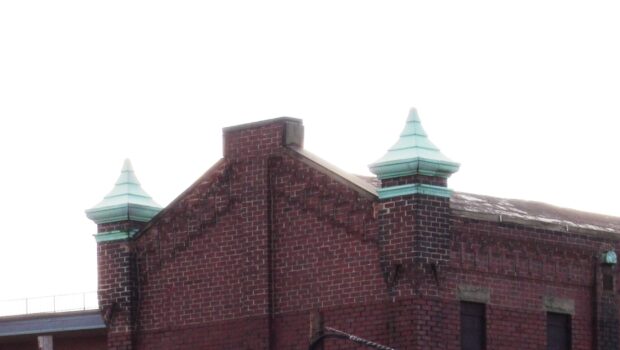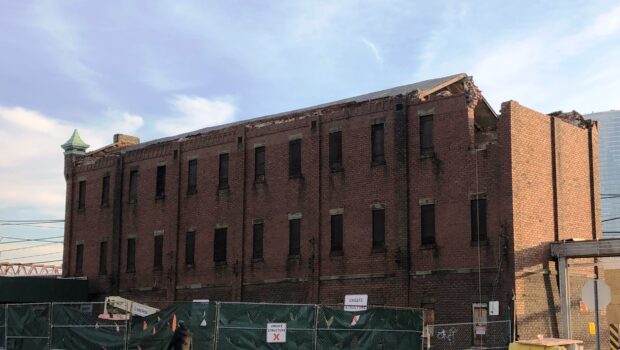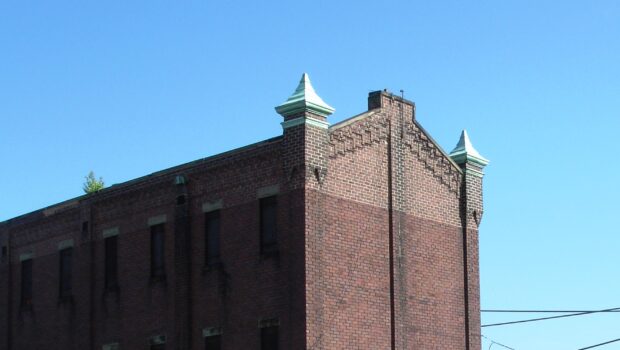
You Don’t Want To See These Historic Hoboken Buildings Torn Down | EDITORIAL
by Susan Lisovicz & Paul Somerville
(images via Paul Somerville)
There is simply no community in New Jersey that is as famous for its rich and colorful history and vibrant, modern lifestyle than Hoboken. Its stunning Hudson River waterfront –directly across from Midtown Manhattan—quickly established the Mile Square City as a critical transportation hub for everything from manufacturing to the military, which used Hoboken as the port of embarkation for thousands of soldiers in World War I.
When historically important buildings are torn down, part of Hoboken’s history goes with it forever. And these red brick factories, industrial spaces and deconsecrated churches are actually more valuable economically to the city when they are adaptively reused.
“Historic preservation is a critical element in what makes Hoboken such a beautiful and special place to live,” said Emily Jabbour, Hoboken Councilmember at Large. I am proud to live in a community that values historic preservation as it allows me to teach my young children about the history all around us,.”
Yet three historic structures are now threatened with demolition and one is being demolished as this story is being written. You don’t want to see these buildings go.
THE RECORDS BUILDING
The Lackawanna Railroad Records Building at 65 Observer Highway, which is part Gothic sandcastle and part medieval fortress, is eligible for listing in the NJ State AND National Registers of Historic Places. This noble, historic structure is currently being demolished. Designed in 1901, it has a flaring, buttressed base, copper turrets, rough-faced brick water table and steel shutters. The Records Building façade reveals a design vocabulary which speaks clearly of its purpose: to protect the valuable, original and often the only paper records of the Delaware Lackawanna & Western Railroad.
Kevin Corbett, president and CEO of NJ Transit has stated in a letter to the City of Hoboken that NJ Transit may store a small percentage of salvaged building materials, and may offer to sell them to Hoboken at some future date. Think about that: NJ Transit is going to demolish this historically important building and then might sell some of the material back to Hoboken. This would never happen in Ridgewood or Summit or Madison.
Despite local developer interest, NJ Transit has ignored a mandate from the State of New Jersey: to maximize the income potential of its non-fare-box revenue to reduce the tax burden to NJ citizens, who are the true owners of the real estate in NJ Transit’s care.
The site plans for NJ Transit’s chosen rail yard project developer, LCOR, show the Records Building remaining. But it is thought that LCOR is the driving force to demolishing this and another historic structure, the Hudson and Manhattan Railroad Repair Shops at Hudson Place, so that there will be a clear site for the office towers it envisions.
With Federal Transit Administration (FTA) approval, NJ Transit abandoned a critical review process, which makes this demolition more expedient.*
Repeated attempts to obtain a comment from Mayor Ravi Bhalla for this article were unsuccessful.
“While I like to promote progressive ideals, here is one area where we need to look backward, not forward, and that is historic preservation,” said Hoboken Councilmember at large Jim Doyle. “Whether it be historically significant architecture or places of historical significance because of events or personages, we need to act to preserve our history, such as the Records Building, the Land Improvement Building, and the Hudson Tubes repair Building.”
THE HUDSON AND MANHATTAN RAILROAD REPAIR SHOPS
Another component of the Hoboken Terminal site is the Hudson and Manhattan Railroad Repair Shops at 55 Hudson Street. This robust industrial structure served the purpose of dropping the train cars for the Hudson Tubes, now PATH, to the track level. These trains have served passengers since 1908, pre-dating NYC’s underwater subway service.
This two-story-over-basement brick building with gently arched windows and corbeled brick details would be an amazing location for a much-needed, adaptively reused Hoboken visitor’s center. This is ideally located near five forms of public transportation (rail, PATH, ferry, light rail and bus). This trapezoidal-shaped workshop with parking has a rooftop that could be used for anything from a green roof to live performances.
Having survived NJ Transit’s ill-conceived eastern alignment of the Hudson-Bergen Light Rail, this building is also slated for the wrecking ball.
THE HOBOKEN LAND & IMPROVEMENT CO. BUILDING
The second of two office locations for the Stevens Family, the Hoboken Land & Improvement Company Building at 1 Newark Street may soon be demolished, to be replaced by an office tower. The 1889 building is the work of architect Charles Fall, who also designed Hoboken Engine Companies 3 & 5, as well as the Eldorado at 1200 Washington St. This historic structure played a significant role in the development of Hoboken, and was added to the National Register of Historic Places in 1979. It is from this location that historic Hoboken was conceived.
Though Robert Fulton gets the credit, it was Hoboken’s John Stevens who held the first patent for his twin-screw steam engine, used in the first fleet of commercial steam engine passenger ferries. It’s therefore clear to see why this unique building was inspired by Stevens’ ferry boats of the time, including the interior arrangement of space, and the overall shape, curved to allow for freight tracks to pass on its south side, bound for Hoboken Terminal, the “Cathedral of Transportation” (Theodore W. Scull)
* https://savingplaces.org/stories/preservation-tips-tools-basics-section-106-review
** https://www.loc.gov/item/nj1608/
***
Following the initial publication of this piece, hMAG received the following statement:
“Mayor Bhalla’s first preference from the beginning has been to preserve and restore the records building to the greatest extent possible. Given NJ Transit’s stated position on the matter, Mayor Bhalla and the Historic Preservation Commission have been strongly advocating for the structures of the records building to be preserved for future use and adaptive reconstruction, which has been committed to by NJ Transit.”
–Vijay Chaudhuri, Spokesman for the City of Hoboken
***
Susan Lisovicz is a journalist, who has called Hoboken home for 20 years
Paul Somerville is a fifth-generation Hobokenite and the former Chairman of the Hoboken Historic Preservation Commission
***

































 Previous Article
Previous Article Next Article
Next Article 2017 HOBOKEN MAYOR CANDIDATE SURVEY
2017 HOBOKEN MAYOR CANDIDATE SURVEY  IT MUST BE THE BAGELS: New Yorkers Keep Lining Up to Move to New Jersey
IT MUST BE THE BAGELS: New Yorkers Keep Lining Up to Move to New Jersey  CUTS FOR A CAUSE: Area Hair Stylists Raise Funds and Confidence for Hudson County Residents in Need
CUTS FOR A CAUSE: Area Hair Stylists Raise Funds and Confidence for Hudson County Residents in Need  That’s Enough Outta Me…
That’s Enough Outta Me…  BILL’S SPACE SHOW: The Gerry Rosenthal Trio — “Hard To Let Go”
BILL’S SPACE SHOW: The Gerry Rosenthal Trio — “Hard To Let Go”  hMAG Joins Forces with TAPInto Hoboken & TAPInto Jersey City to Expand Local News Delivery
hMAG Joins Forces with TAPInto Hoboken & TAPInto Jersey City to Expand Local News Delivery  HOBOKEN RELIEF FUND: Local Businesses, Artists and Government Unite to Lift Each Other Up
HOBOKEN RELIEF FUND: Local Businesses, Artists and Government Unite to Lift Each Other Up  DRINK LOCAL: The Birthplace of American Brewing, Hoboken Taps Into the Craft Movement
DRINK LOCAL: The Birthplace of American Brewing, Hoboken Taps Into the Craft Movement